The Best Molasses Crackle Cookies Recipe for Sweet Moments
Sweet memories of childhood baking often revolve around molasses crackle cookies that fill kitchens with warm, nostalgic aromas.
Grandmothers across generations have perfected this delightful treat with simple ingredients and love.
Crisp edges and soft centers make these cookies irresistible to anyone who tries them.
Crackled surfaces hint at the deep, rich flavor waiting inside each bite.
Spices like cinnamon and ginger dance through the dough, creating an irresistible warmth.
Baking these cookies connects you to treasured family traditions and comfort.
Prepare to fall in love with every delectable, crumbly morsel that emerges from your oven.
Molasses Crackle Cookies You’ll Crave Again and Again
Molasses Crackle Cookies: What’s Inside
Primary Ingredients:Dry Ingredients:Coating Ingredient:Molasses Cookie Baking Instructions That Crackle Perfectly
Step 1: Warm Up the Oven
Crank the oven to 350°F and line two baking sheets with parchment paper for easy cookie removal.
Step 2: Whip Up the Wet Mixture
In a large mixing bowl, blend canola oil and sugar until smooth and creamy.
Step 3: Add Sticky Goodness
Pour in molasses and crack an egg, then mix until everything is beautifully combined.
Step 4: Create the Dry Blend
In a separate bowl, whisk together:Step 5: Combine Wet and Dry Ingredients
Slowly fold the dry ingredients into the molasses mixture, stirring until just combined.
Don’t overmix!
Step 6: Roll in Sweet Coating
Sprinkle remaining sugar in a small bowl.
Use a two-tablespoon scoop to create dough balls, then roll each one in the sugar for a sparkly exterior.
Step 7: Arrange on Baking Sheets
Place cookie balls on prepared sheets, leaving at least two inches between each one to allow room for spreading.
Step 8: Bake to Perfection
Slide the sheets into the oven and bake for 10 to 12 minutes.
Look for golden brown edges and a slightly cracked top – that’s when you know they’re done!
Holiday Baking Tricks for Crackly Molasses Cookies
Keep Molasses Crackle Cookies Fresh
Pairing Suggestions for Molasses Crackle Cookies
Crackle Cookies Spice or Texture Twists
FAQs
These cookies have a distinctive crackled top that forms during baking, creating a beautiful texture and rustic appearance. The cracking happens when the sugar-coated exterior bakes and splits, revealing a soft, chewy interior.
Molasses crackle cookies are soft and chewy with slightly crisp edges. The combination of molasses and oil keeps them moist and tender, making them a delightful treat that’s not too hard or too soft.
Molasses adds deep, rich flavor and helps create the signature dark color of these cookies. It also contributes to the moisture and provides a complex, slightly sweet taste that’s different from regular sugar cookies.
While the recipe calls for ginger, cinnamon, and cloves, you can adjust the spice blend to your preference. Some bakers like to add nutmeg or cardamom for extra warmth and complexity in the flavor profile.
Print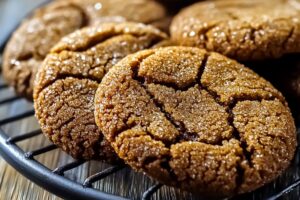
Molasses Crackle Cookies Recipe
- Total Time: 25 minutes
- Yield: 24 1x
Description
Sweet memories of grandma’s kitchen come alive with these molasses crackle cookies, where rich spices and deep caramel notes dance across a crisp, sugar-dusted surface. Warm winter comfort waits in each crackled bite that connects you to generations of baking love.
Ingredients
Primary Ingredients:
- 3 2/3 cups (437 grams) all-purpose flour
- 1 cup (240 milliliters) canola oil
- 2 1/4 cups (450 grams) granulated sugar
- 1/3 cup (80 milliliters) molasses
- 1 egg
Spices and Leavening Agents:
- 1 tablespoon baking soda
- 1 tablespoon ground ginger
- 1/2 teaspoon ground cinnamon
- 1/4 teaspoon ground cloves
Garnish:
- 2 1/4 cups (450 grams) granulated sugar (for rolling)
Instructions
- Whisk the dry ingredients (flour, baking soda, ginger, cinnamon, and cloves) in a medium mixing bowl until thoroughly combined.
- In a large bowl, vigorously blend canola oil with most of the sugar until the mixture becomes smooth and lighter in color.
- Incorporate the molasses and egg into the oil-sugar mixture, stirring until the liquid ingredients are fully integrated.
- Gradually fold the dry ingredient mixture into the wet ingredients, stirring gently until a cohesive dough forms without overmixing.
- Prepare a separate shallow dish with the remaining sugar for coating the cookie dough.
- Using a portioning scoop, create uniform dough balls, then roll each one completely in the sugar to create a sparkling exterior.
- Arrange the sugar-coated dough balls on parchment-lined baking sheets, ensuring substantial spacing between each cookie to allow for spreading.
- Heat the oven to 350°F and position the rack in the center for even baking.
- Slide the prepared baking sheets into the preheated oven and bake for 10-12 minutes, watching for the signature golden-brown edges and characteristic surface cracking.
- Remove cookies from the oven and let them rest on the baking sheets for a few minutes to firm up before transferring to a wire cooling rack.
Notes
- Swap canola oil with coconut oil for a richer, more tropical flavor profile that adds subtle sweetness.
- Roll cookie balls in turbinado sugar instead of white sugar to create extra sparkly, crunchy exterior with deeper caramel notes.
- Ensure spices like ginger and cinnamon are fresh to maximize their aromatic intensity and warm, complex flavor depth.
- Store cookies in an airtight container with a slice of bread to maintain soft, chewy texture for several days after baking.
- Prep Time: 15 minutes
- Cook Time: 10 minutes
- Category: Desserts, Snacks
- Method: Baking
- Cuisine: American
Nutrition
- Serving Size: 24
- Calories: 195
- Sugar: 8 g
- Sodium: 180 mg
- Fat: 9 g
- Saturated Fat: 1 g
- Unsaturated Fat: 7 g
- Trans Fat: 0 g
- Carbohydrates: 29 g
- Fiber: 0.5 g
- Protein: 2 g
- Cholesterol: 10 mg

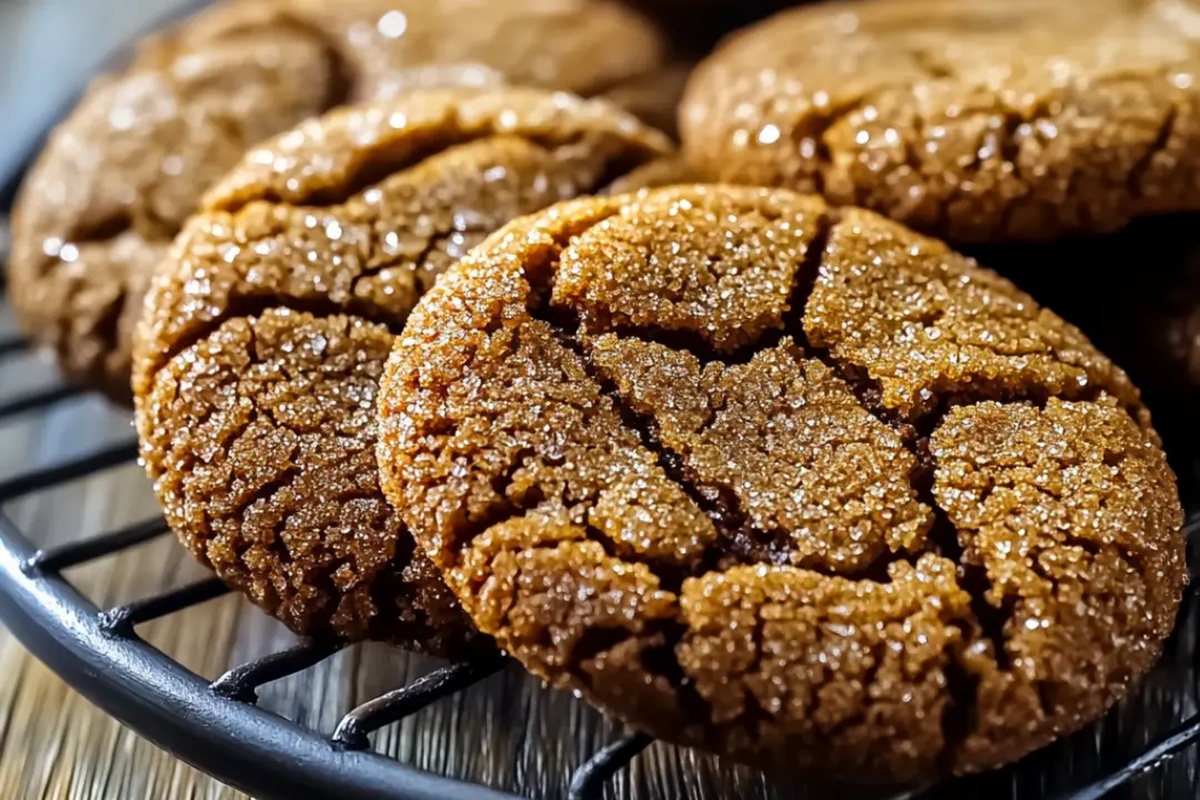
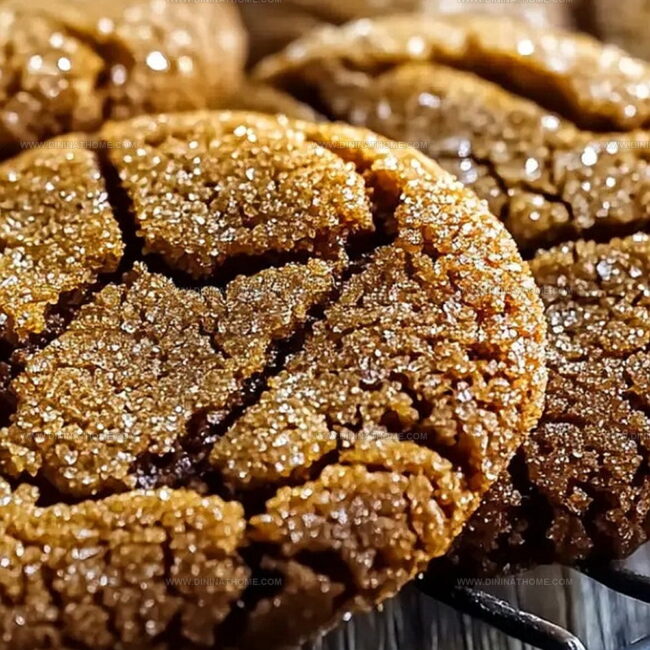
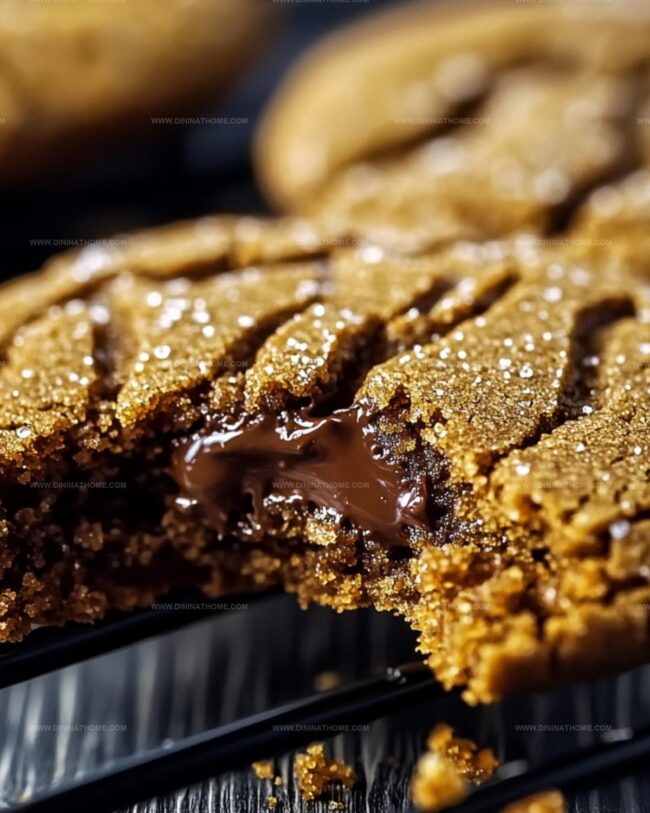
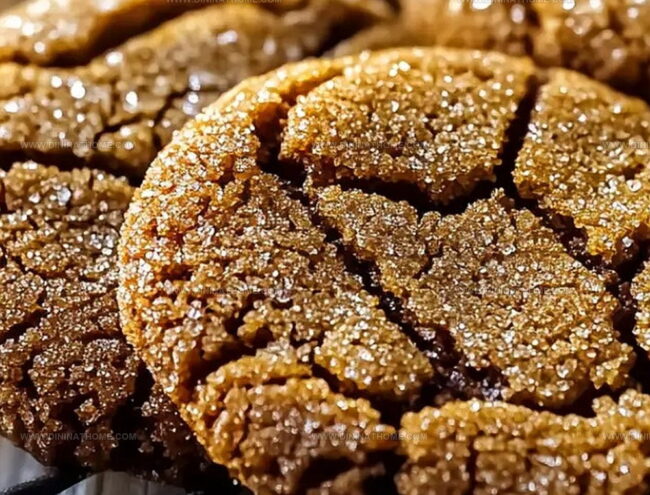
James Walker
Lead Recipe Developer & Culinary Educator
Expertise
Southern Cuisine & Farm-to-Table Cooking, Recipe Development & Testing, Culinary Education & Instruction
Education
School: Auguste Escoffier School of Culinary Arts
Program: Diploma in Culinary Arts and Operations
Focus: Comprehensive training in classical and modern culinary techniques, kitchen operations, and farm-to-table practices.
James didn’t learn cooking from a TV show, he learned it from busy kitchens, family gatherings, and long afternoons spent testing recipes the hard way.
After training at the Auguste Escoffier School of Culinary Arts, he brought his love for real, down-to-earth food to every dish he makes.
At Dining At Home, James loves building recipes that feel familiar but still have something special, like adding a twist to a classic or making a slow Sunday dinner feel brand new.
When he’s not in the kitchen, you’ll probably find him swapping garden tips at the farmers’ market or teaching his daughter how to flip pancakes without a mess (almost).